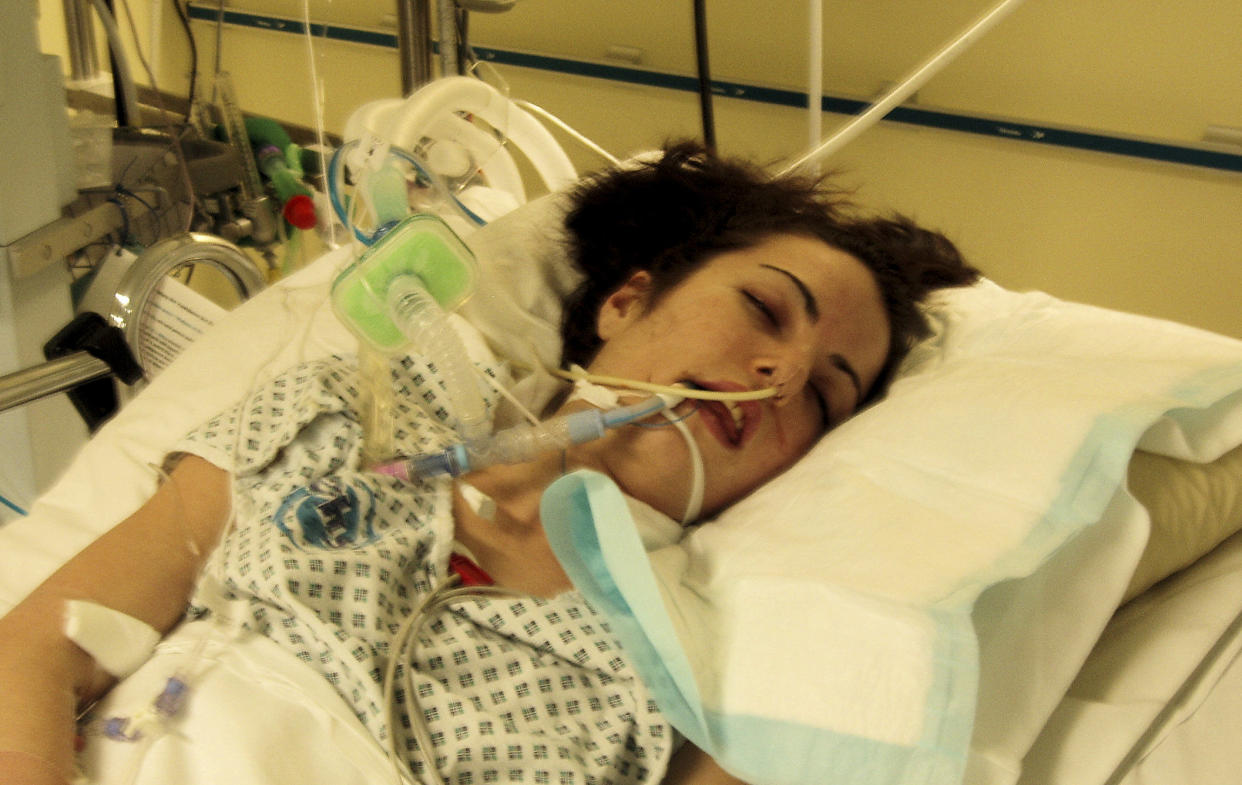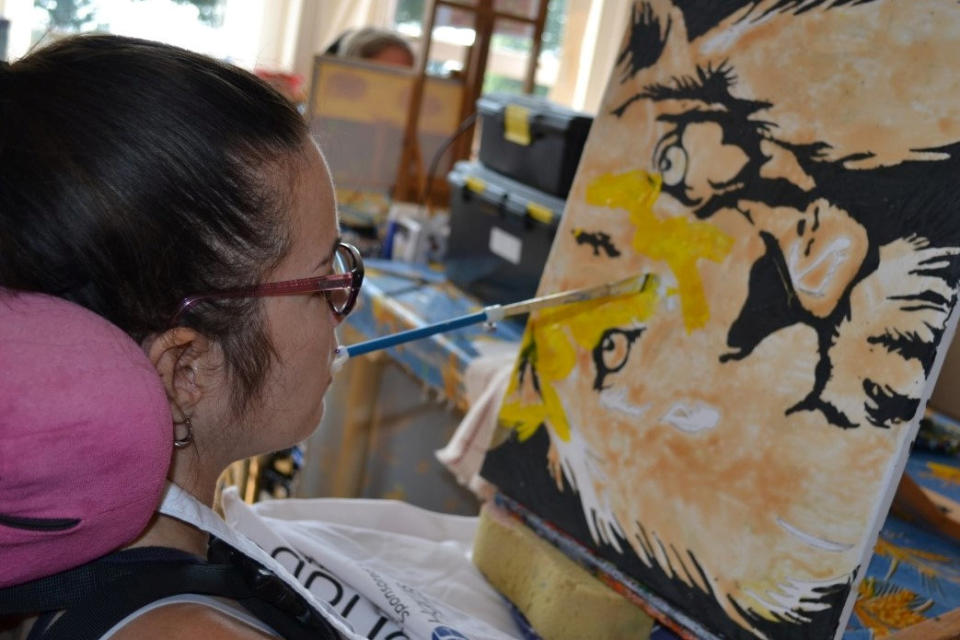Paralysed mum with locked-in syndrome writes entire book with her eyes

A mum with locked-in syndrome, who was left paralysed after a cartwheeling accident, has written an entire book using just her eyes.
Tracey Okines, 39, from Hastings, East Sussex, tore an artery in her neck after landing on her head while performing the gymnastics stunt in 2008.
The accident caused a blood clot at the base of her brain and put her in a coma for five months.
The former nursery nurse and model woke up one day unable to move anything apart from her eyes and has now been living with locked-in syndrome for over a decade.
Despite not being able to move, Tracey is completely conscious, with the ability to think, see and hear.
The condition means she is only able to move her eyes, but she has learned how to use a colour-coded board to communicate.
Read more: Parents share their relief as premature twins born with coronavirus are allowed home
Okines has spent the past six years writing a book, painstakingly using her eyes to select each letter.
Released in May, the proceeds of the book sales will be donated to the mum-of-one’s local food bank to ease the pressure of a rise in demand due to the coronavirus pandemic.
The title of the book, I’m Glad You Didn’t Die Mummy, is the sentence her daughter, Amber, 19, said when they were reunited for the first time after the accident.

Straight after the accident, in January 2008, Okines was unaware she had suffered an injury and carried on with her daily life, but the blood clot was depriving her brain of oxygen and she suffered a stroke a few days later.
She was taken to hospital, but it was too late as the section of her brain which sends signals to the muscles had died.
After being in a coma for five months, she was diagnosed with locked-in syndrome.
Following years of rehabilitation, Okines regained enough movement in her neck to begin writing using a tablet.
The device is built with software that allows her to select letters on the screen, by using her chin to press a button attached to her chair.
Gradually she can build up letters to form words and sentences.
It also means she is now able to go out independently, as she able to drive her wheelchair.
She has started eating normal food too, for the first time in years and is learning to speak again.
Read more: Man who hasn't visited a doctor for 70 years shares his two top tips for staying healthy
Speaking via her communication tablet, which she operates using her chin, Okines, said: “Before my accident I took everything for granted, especially my health.
“I thought this would never happen to me.
“This sort of thing happens to other people. I never imagined that I would experience this in my lifetime.
“After a few months I began to see the world more clearly and reality hit hard. I realised that the world I had once loved had gone.”

Writing in her book, Tracey describes the frustration she feels when people try to guess what she’s saying before she’s finished.
“Over time I’ve learnt all the tricks which people use not to communicate with me.
“Some people avoid looking at my eyes. That way they can just say, ‘Oh, I didn’t notice.’
“There are the people who ask me questions and they don’t even look at me when I answer. There are the people who are impatient: they only let me say a word or half a sentence, then they simply presume that they know what I’m talking about.
“There are the people who take one look at the letter board and run off saying that they can’t do it – I think, ‘You haven’t even tried’.
Read more: Mum-of-two still can't walk or play with her children five months after recovering from coronavirus
Okines says there are also people who try to guess a word.
“When someone guesses loads of times on one letter, saying one sentence can take forever.
“It is much quicker to just let me spell what I want to say.
“A lot of people would talk to me very loudly and slowly as though I was a bit deaf or stupid. I am neither.”
Speaking about the decision to write her book Okines says she wanted to raise awareness about living with a disability.
“When I was first diagnosed I didn’t know anything about disability, and all the information I found was negative.
“It is really not as bad as people may think.
“I wanted to help people to know what it is really like to be disabled.”
She now hopes she can help to switch up the conversation surrounding disability.
“The way people see disability is changing for the better,” she explains.
“Remember that disabled people are just human beings whose health has gone wrong.”

Okines is currently living at The Chaseley Trust care home in Eastbourne – where she has been for three years.
She is on a waiting list to live in her own home, which will be adapted for her needs so she can live independently – with the help of visiting carers.
“I’d love to be better, but I know that I will never be the person I was before. I don’t want to live in a care home for the rest of my life, but I know I will need someone to care for me,” she explains.
“For over a decade now I have been living with locked-in syndrome. At first I hated it and I wanted to kill myself, but I’m glad that I stayed alive.
“I found my health improving and I’m now doing things that I never thought I’d be able to do.”
What is locked-in syndrome?
According to the NHS locked-in syndrome has similar features to something known as disorders of consciousness, which is a state where consciousness has been affected by damage to the brain.
A person with locked-in syndrome is both conscious and aware, but completely paralysed and unable to speak.
They're usually able to move their eyes and are sometimes able to communicate by blinking.
While there isn’t a cure or specific treatments for locked-in syndrome, supportive therapy for breathing and feeding is very important, especially early on.
Physical therapy, comfort care, nutritional support and prevention of systemic complications such as respiratory infections are the main forms of treatment.
Okines book, I’m glad you didn’t die mummy, is available on Amazon.
Additional reporting SWNS



